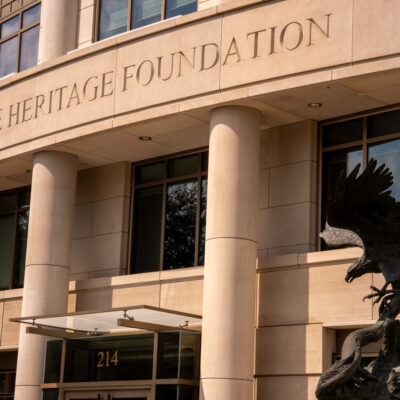
Courtesy of Akimori
Omakase obsession: Kosher sushi gets an upgrade
A look inside the newest kosher food trend
For a people that loves to eat — there’s a reason the adage “They tried to kill us, we survived, let’s eat!” is used to describe many a Jewish holiday — the early kosher food scene in the U.S. was dismal. For a time, matzah ball soup and corned beef sandwiches at the local deli accounted for the entire market (Sephardic-owned restaurants added a sprinkling of Spanish and Middle Eastern alternatives to the mix, but options, overall, were limited). These days, however, the kosher market has become a melting pot of nearly endless choices; observant foodies can enjoy authentic Indian tikka masala as easily as they can their mother’s homemade brisket. Yet, one dish has altered kosher dining more than any other: sushi.
Once introduced in the late ‘90s, sushi fever spread rapidly throughout the Jewish community, turning fast-casual kosher eateries into catch-all pizzerias serving spicy tuna and California rolls alongside pasta entrées and bagel sandwiches.
“Within a few years you started seeing sushi everywhere, in every restaurant,” Dani Klein, who runs the YeahThatsKosher blog, told Jewish Insider in a recent interview. “You would see sushi at every Jewish affair, be it a bar mitzvah, a wedding and even like a regular Shabbat kiddush.”
Recently, another shift has taken place. Instead of maki rolls and sashimi platters perfect for working customers during their lunch break or families enjoying a night out, kosher restaurateurs are turning their focus toward fine dining and premium-quality Omakase experiences that rival their non-kosher competitors.
Klein, 41, who founded YeahThatsKosher in 2008 as a resource for observant travelers to stay informed about changes within the global kosher landscape, sees the shift as part of a larger trend, which has seen the upscaling of kosher restaurants as a whole within the last 10 to 15 years.
“More steak houses, more expensive eateries, etc… that’s really ramped up in the last like three years, where almost all of the restaurants that are opening up, if they’re not a fast food-type place, they’re going to be upscale,” Klein explained. “There’s almost nothing in the middle, and I bring this up because if we’re seeing the upscaling of all these other types of places, it was only a matter of time before we saw an upscaling of sushi, which has become so popular in the last 20-plus years.”
Omakase, which translates to “I’ll leave it up to you,” is a style of Japanese cuisine in which the customer gives control of their meal over to the chef — trusting them to serve pieces that are both unique and of high quality. It’s a popular, and generally pricey, dining experience consisting of a number of courses, which the chef prepares in front of the waiting party.
Where salmon, tuna and yellowtail are staples of typical sushi, omakase takes those building blocks and enhances them. Customers might be presented with toro and fluke, barracuda or golden eye snapper, among other varieties of fish, all in various stages of preparation. Masuda Omakase, which opened its first brick-and-mortar restaurant near Bryant Park in Manhattan in July, offers a nigiri piece that includes a quail egg with truffle oil on top.

“It was always my dream to open a sushi restaurant. I was always obsessed with sushi. I went to Japan for my honeymoon, that’s how much I love it. I went to culinary school for a few years, so that’s where I get my knowledge of cooking,” Masuda Omakase owner and founder Abraham Chetrit told JI. “I knew what kind of high-quality sushi was being served out there in the rest of the world and wanted to bring that to the Jewish community. A lot of the non-kosher restaurants know what kosher is and advertise that they do ‘kosher style,’ so I said to myself, why not make that actually kosher.”
In New York City alone, the last three years have seen a boom in kosher omakase. Akimori, which opened its flagship Brooklyn storefront in 2021, now has four locations and a fifth space on the way.
“Everything I just kept on hearing was, ‘We need good kosher sushi. Like non-kosher sushi, but kosher.’ I went to yeshiva, so I know what makes things kosher and what makes things not kosher, and essentially, everything about non-kosher sushi is kosher other than the shellfish,” Teddy Khafif, Akimori’s founder and co-owner, told JI. “So it’s really just understanding the Japanese culture and how they do it, and then once you know that, then I was able to apply that into the kosher world.”
Khafif, who was formerly the chef de partie at Masa, took what he learned from nearly a decade working under a number of famed chefs, including three-time Michelin-starred chef Masa Takayama, and used those experiences as the basis for Akimori.
“We just want to serve really good sushi, omakase-style,” Khafif said. “We want you to have a nice drink, we want you to eat the best pieces, and just walk out saying, ‘Wow, that was the best sushi I ever had.’”
What makes the New York kosher omakase scene so unique is the way in which it first started. Rather than opening traditional brick-and-mortar businesses, many of the restaurants that were founded in 2020, such as Akimori and Masuda Omakase, began by launching as specialized, at-home omakase experiences, where they catered directly to their customers — a move that Klein attributes largely to COVID.
“When you think about what COVID did, is it forced businesses, whether existing or new entrepreneurial-style businesses, to come up with new concepts…In the first year of COVID there wasn’t a lot of going out… And it forced businesses to figure out a way to still bring experiences, especially high-end experiences, ones that you are going to be willing to pay extra dollars for, to your home.” Klein explained. “This omakase experience, where you’re getting higher quality fish, higher quality product and flavors and potentially things that you’ve never had before brought directly to you, was something new and it was something that was innovative to the kosher community in particular.”

Like omakase itself, these catered experiences aimed to elevate how their kosher clientele consumed sushi by providing not only the food, but the tableware and ambiance as well.
“Our team would come approximately 30 minutes before the event started. They would set the dining room table with our place settings, then they would set up our chef’s station (which could be on a kitchen counter or table nearby) with all of the ingredients and appliances,” Chetrit told JI in an email. “When the host is ready for dinner, we start serving the meal course by course. We start off with an appetizer, then serve the sushi pieces and then the hand roll.”
For many restaurants, kosher omakase is also a way to connect with other businesses in the community. Two of Akimori’s locations are in-house partnerships — one with Salt Steakhouse in Deal, N.J., and the other with Bonito in Manhattan. FinBar, which had its soft opening in June before opening fully at the end of July, operates out of Patis Bakery, a popular kosher French cafe chain around New York City.
FinBar’s co-owner Asher Ragimov, who also co-owns Brooklyn-based kosher omakase restaurant Koma with a different group of partners, did not grow up with a religious background, but after becoming more observant, wanted to bring his favorite style of dining to kosher audiences.
“I felt like the kosher market was lacking. And that’s the reason that we decided to go with OMA currency rather than regular sushi,” he told JI. “Regular sushi is something that anybody can really do. Omakase, you need a specialized chef, somebody that has to have experience. All our chefs have a minimum of 15 years’ experience in just omakase sushi.”

Given the price tag for a night of omakase dining — both non-kosher and kosher omakase can range from around $40 to over $500, depending on the restaurant and number of courses — most restaurants also offer one-off rolls or cheaper lunch items before dinner hours set in. In Masuda Omakase’s case, the restaurant touts a hand roll bar, which YeahThatsKosher deemed “the World’s First” for kosher diners.
But despite the similarities between restaurants, no two omakase experiences are the same. Manhattan’s Sen Sakana, which opened in 2017, and is helmed by executive chef and “Chopped” champion Mina Newman, showcases Newman’s Peruvian background through Nikkei cuisine — a fusion between Japanese and Peruvian cuisines that was created during the Japanese diaspora when a slew of Japanese immigrants who had settled in Peru used the ingredients available to them in their cooking.
“I always use the example of the New York Jewish bagel,” Newman told JI. “It was the Eastern European Jews that made that. They made do with what they had around them, right? Very similarly to what we know with Nikkei.”
Newman’s is a slight exception to the rule, as Sen Sakana originally started out non-kosher before converting over after coming back from the pandemic — the restaurant’s owner is the son of a Holocaust survivor and wanted to make the switch — but it still fits within the overall trend.
While the kosher omakase boom has stayed largely in the New York area and parts of South Florida — popular Florida spot Naamah Sushi has locations in both Boca Raton and Fort Lauderdale — Klein sees potential for the trend’s expansion into other cities and high-end destinations such as Los Angeles, the Bahamas, Playa del Carmen and Cancún, in Mexico, or even Israel, Paris and London.
“The popularity of sushi in general has not waned,” Klein said. “To have options of a regular sushi and then an upscale, fancy, high-end version of sushi, which is essentially what omakase is, I think very much complements what is already an offering within the kosher market.”






